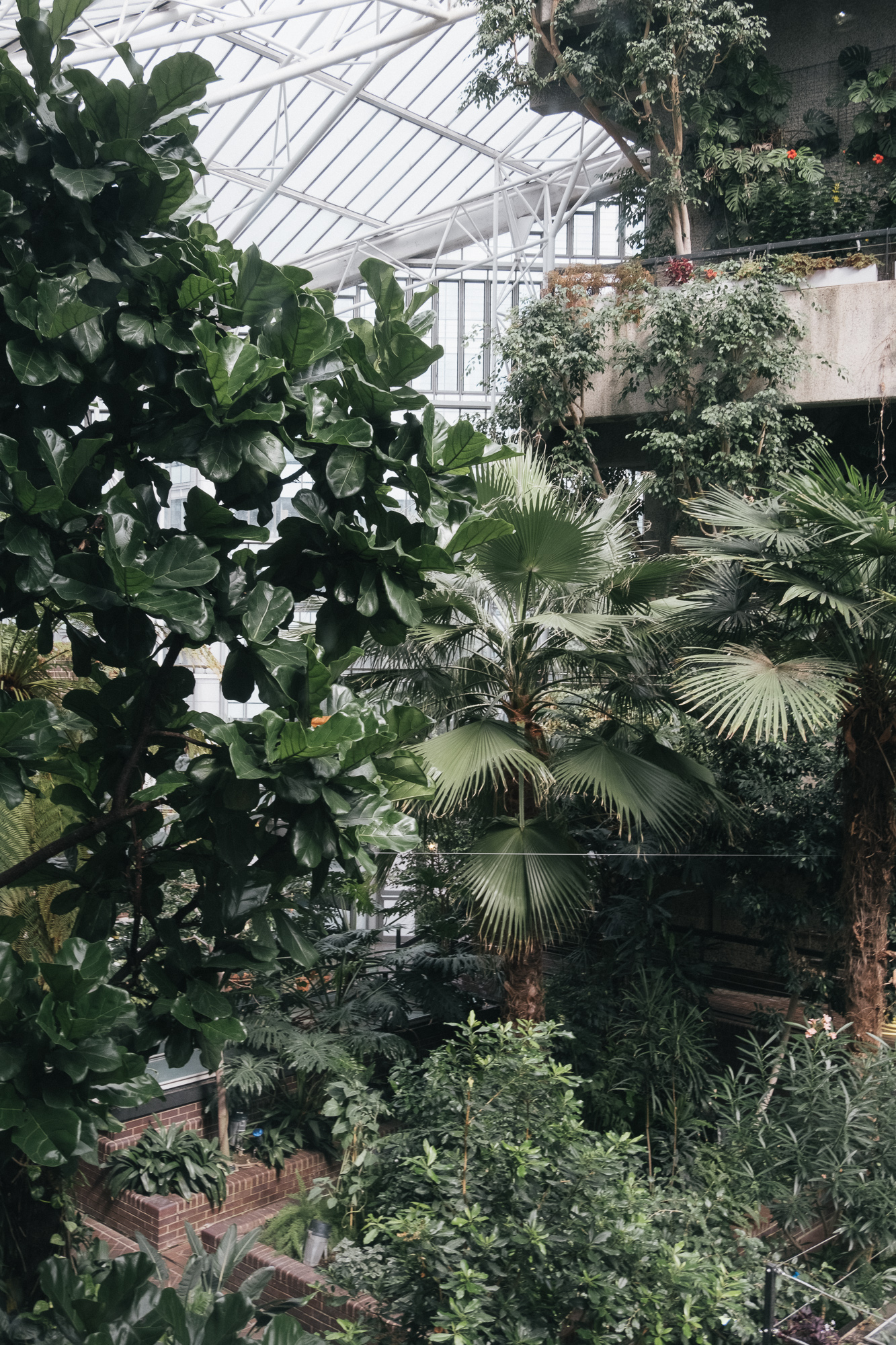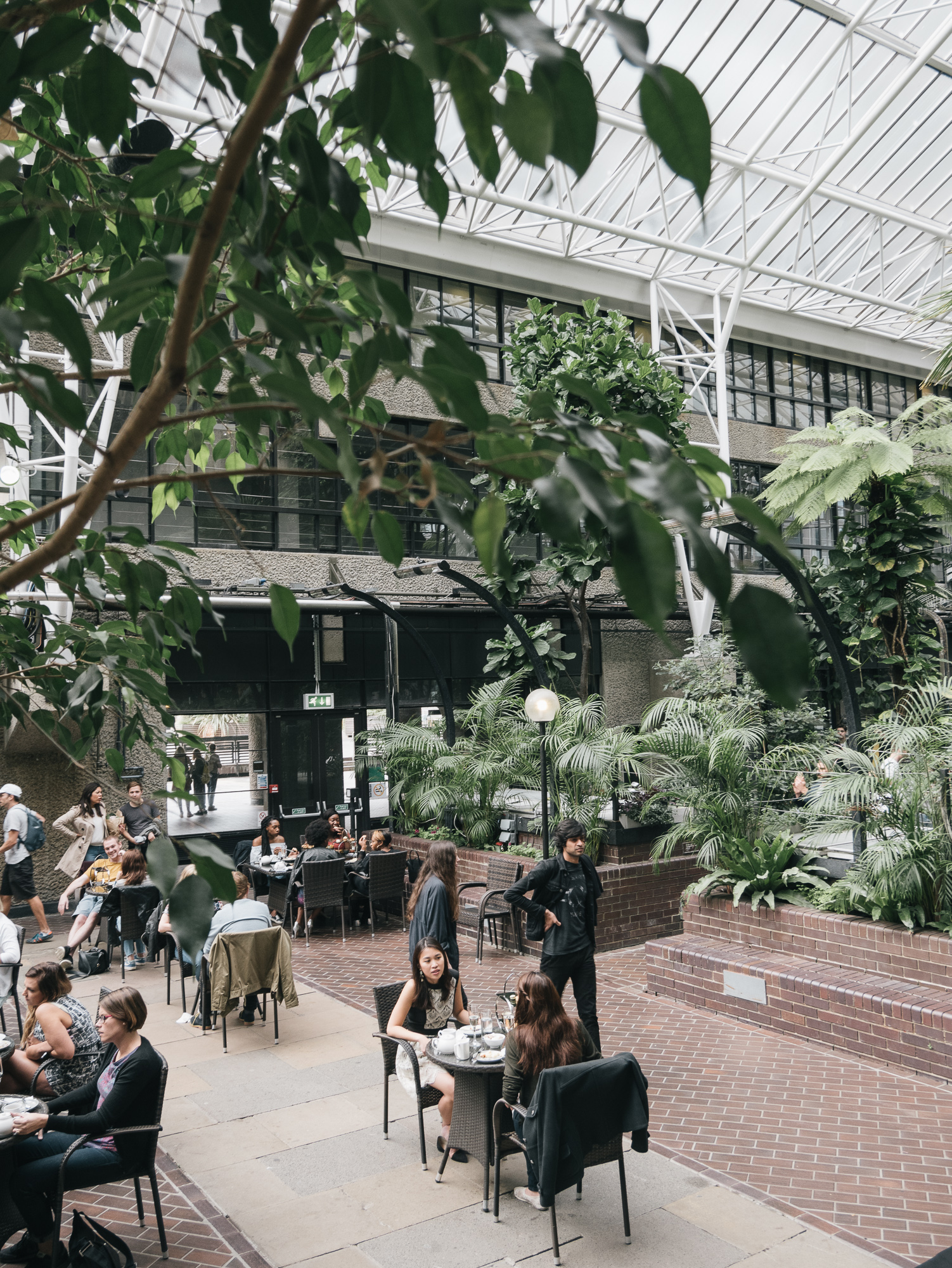Barbican: Brutal And Beautiful Architecture
I remember my first visit to the Barbican. It was in 2008, I was a college student and our tutor took us to see the exhibition about the works of Le Corbusier, a French architect that made the most impact on the 20th-century modernism, and Barbican is a direct product of such an influence. “It’s the place you either love or hate”, told us our tutor when we walked through masses of concrete. And right there I felt that I had to decide where do I belong in this strong statement? But I couldn’t pick the sides. Yes, It felt massive, grey, and the maze-like, I felt pretty much disoriented and it was clear to me why would some people hate this place. However, I couldn’t quite figure out why people might ‘love’ this place, it got me curious. A year later I took a tour around Barbican as then a university student to learn more about its design and construction.
Over the years I’ve become a regular visitor because Barbican is the largest art centre in Europe and hosts many cultural events, performances and exhibitions that I wanted to see.
Every time I visit the Barbican I learn something new about this place, there is simply so much going on and plenty of hidden pockets to discover over and over again. It’s got a theatre, a library, a cinema, the second largest conservatory in London (the first one is Kew Gardens), bars and restaurants, exhibition and conference spaces. For me, it was a slow discovery that spanned a decade that I lived in London. Every time I visit London now- it’s the first place I go to. Firstly, because now I’m happy to pick the side of the love/hate argument and definitely say I absolutely LOVE this place. Secondly, because it's a nice walk from Liverpool Street station where the airport shuttle train takes me to, as soon as I arrive in London.
So, can brutal be beautiful? In my opinion yes it can be and Barbican is a great example of this. To me, it’s the two things that make this place so unique and beautiful- concrete and plants, plenty of it! It is everywhere you look and it's well balanced. The oasis with no cars, no traffic at the scale like no other anywhere else in London. The concrete walls block the noise from the bustling city and suddenly it feels so quiet with many places to rest and paths to walk. It feels like you walk behind the fortress wall that’s there to protect your peace of mind, in fact, 'Barbicana’ from the Low Latin means fortified gateway which was used for defence purposes, a metaphor is right there.
The Barbican site is on the northern edge of what was once Roman Londinium
Barbican conservatory is the second biggest in London
A distinctively Barbican “U” shape design is used throughout the estate
Conservatory is open to public only on Sundays
Barbican Conservatory is free to visit
The textured concrete effect is hand-drilled
Every time I come back I discover something new about this place
Barbican is not only the biggest art centre, but also a large residential estate
The Roman Wall, the Medieval Church and the 20th century Modernist utopia-Barbican
The continuity of paved terraces extending under buildings and the areas of planting or water which link and define the open spaces make a significant contribution to the unity of the whole
The pedestrian level, which is generally 6 meters above street level, extends over 4.8 ha of the site
You'd be surprised how much water and greenery there is
The Barbican lake contains water lilies and other aquatic plants.
The view to the medieval church St Giles and The City
So many juxtapositions in details
On a sunny day Barbican is especially captivating
Barbican kitchen takes care of the coffee and lunch cravings
Barbican is the largest European art centre
An oasis in the concrete walls
Conservatory is home for over 2,000 species of tropical plants and trees
Afternoon Tea in a Conservatory is an exceptional experience.
Every time I'm in London I make sure I visit the Barbican



























